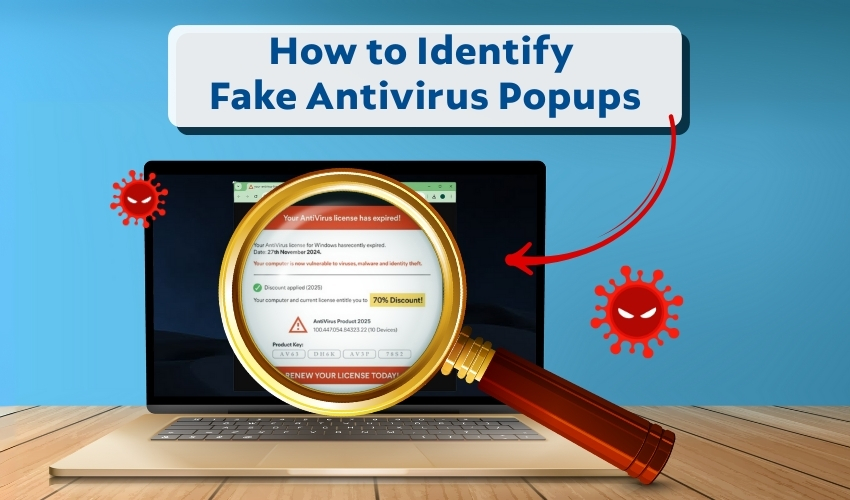How to identify fake antivirus popups

How to Identify Fake Antivirus Popups
Fake antivirus alerts, scam popups, and malware warnings are common tactics used by cybercriminals in order to trick users. These messages try to scare people into downloading harmful software or giving away personal information. Read quick ways to identify fake antivirus alerts to keep your device and important personal data safe.
Common Signs of Fake Antivirus Alerts
Fake antivirus alerts usually appear unexpectedly while browsing websites or opening email links. They often display alarming messages, such as “Your computer is infected!” or “Immediate action required!” Real antivirus programs rarely use such dramatic language. Here are typical traits of scam popups and malware warnings:
- Urgent Messages: The alert creates a sense of panic or pressure to act immediately.
- Unknown Source: It comes from a website or program you do not recognize.
- Payment Requests: Popups ask for credit card information or payment to remove threats.
- Unexpected Downloads: Prompts appear to install software you did not request.
Effective Ways to Identify Fake Antivirus Alerts
Whenever you happen to encounter a suspicious message, follow these methods:
1. Verify the Source
Check where the alert is from. If it is a website or an unknown program rather than your installed software, it may be a fake antivirus alert
2. Look for Grammatical Errors in Notifications
Fake alerts or notifications have absurd spelling mistakes, or unusual formatting style. Reputable antivirus software rarely has such mistakes.
3. Never Click Links Without Verifying Source
Never click on any buttons or links in a suspicious pop-up. Scam pop-ups may install malware or steal sensitive data.
4. Close the Popup Safely
Use Task Manager on Windows or Force Quit on Mac to close the browser or program showing the scam pop-up. Avoid interacting directly with the pop-up to prevent accidental downloads.
5. Run a Trusted Scan
After closing the popup, run a full scan using your verified antivirus software. If the scan finds no threats, the initial malware warning was almost certainly fake.
Preventive Measures to Follow
Preventing fake antivirus alerts and scam pop-ups and identifying them is important for safety and security in the digital world. Here are some practical steps:
1. Keep Software Updated
Regularly update operating system, browser, and antivirus program to the latest version. Cybercriminals may often exploit an outdated software tool in order to display fake antivirus alerts and malware warnings.
2. Use Browser Security Features
The best thing to do is to enable pop-up blockers, anti-phishing filters, and safe browsing tools in system browser. These features highly increase the reduction in the chances of encountering scam popups.
3. Avoid Suspicious Links
Do not click links in unknown emails or unfamiliar websites. Many fake antivirus alerts and scam popups originate from unsafe sites.
4. Install A Reliable Antivirus Program
A reliable antivirus program is good at detecting real malware and ignoring fake alerts. A reliable antivirus program helps understand the threats in advance.
5. Educate Yourself
Familiarize yourself with common signs of fake antivirus alerts, scam popups, and malware warnings. Knowledge makes it easier to recognize threats before they cause harm.
6. Backup Important Data
Regularly back up your files to an external drive or cloud storage. Even if a fake alert tricks you into installing harmful software, your data remains safe.
Final Thoughts
Fake antivirus alerts, scam popups, and malware warnings are designed to manipulate fear and urgency. Recognizing these signs, following the steps above, and practicing preventive measures can help protect your device. Staying alert and cautious ensures that your personal data and system remain secure.
